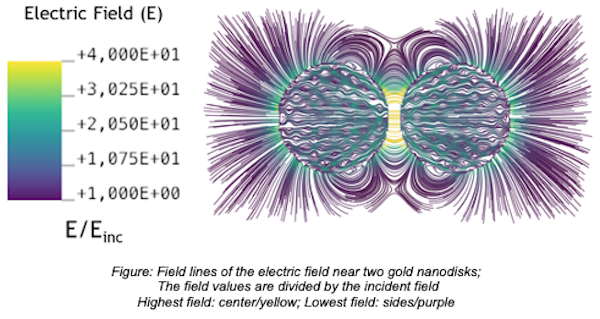Simulation of surface enhanced vibrational spectroscopy:
A journey to a unified method
T. Colleu-Banse1, A. Fekete1, M. Lobet1, V. Liégeois2, L. Henrard1
1 Department of Physics and NISM Institute, University of Namur
2 Department of Chemistry and NISM Institute, University of Namur
tanguy.colleubanse@unamur.be
Surface Enhance Vibrational Spectroscopies (SEVS) are well known experimental methods to detect trace amounts of a compound. However, simulations of SEVS spectra are challenging although necessary to interpret experimental results. It requires to describe the vibrational modes of a molecule and the electro-magnetic response from a surface or from a nanoparticle within a single framework. This is the aim of the SURFASCOPE project. Here, we propose to combine a quantum approach to simulate the vibrational modes of ethanol and a classical one to simulate the plasmon excitation of gold nanodisks.
First, the electro-magnetic response and the local field of two gold nanodisks are studied within the discrete dipole approximation (DDA) as a function of the distance between the nanoparticles. The figure illustrates the creation of a hot spot (region of high electric field) in the nano-gap.
Then, the influence of an inhomogeneous electric field on frequencies and IR intensities of the vibrational modes of ethanol is investigated with quantum chemistry method (Hartree-Fock self-consistent field (SCF) method). A field gradient leads to a redshift of the main modes and, in some case, to mode mixing.
In another approach in the DDA frame, the IR response of a molecule lying nearby the gold nanodisks is modelled by a single dipole position in the hot spot region. The resonant absorption of the molecule is modelled with an eigen-frequency in the plasmonic excitation range.

